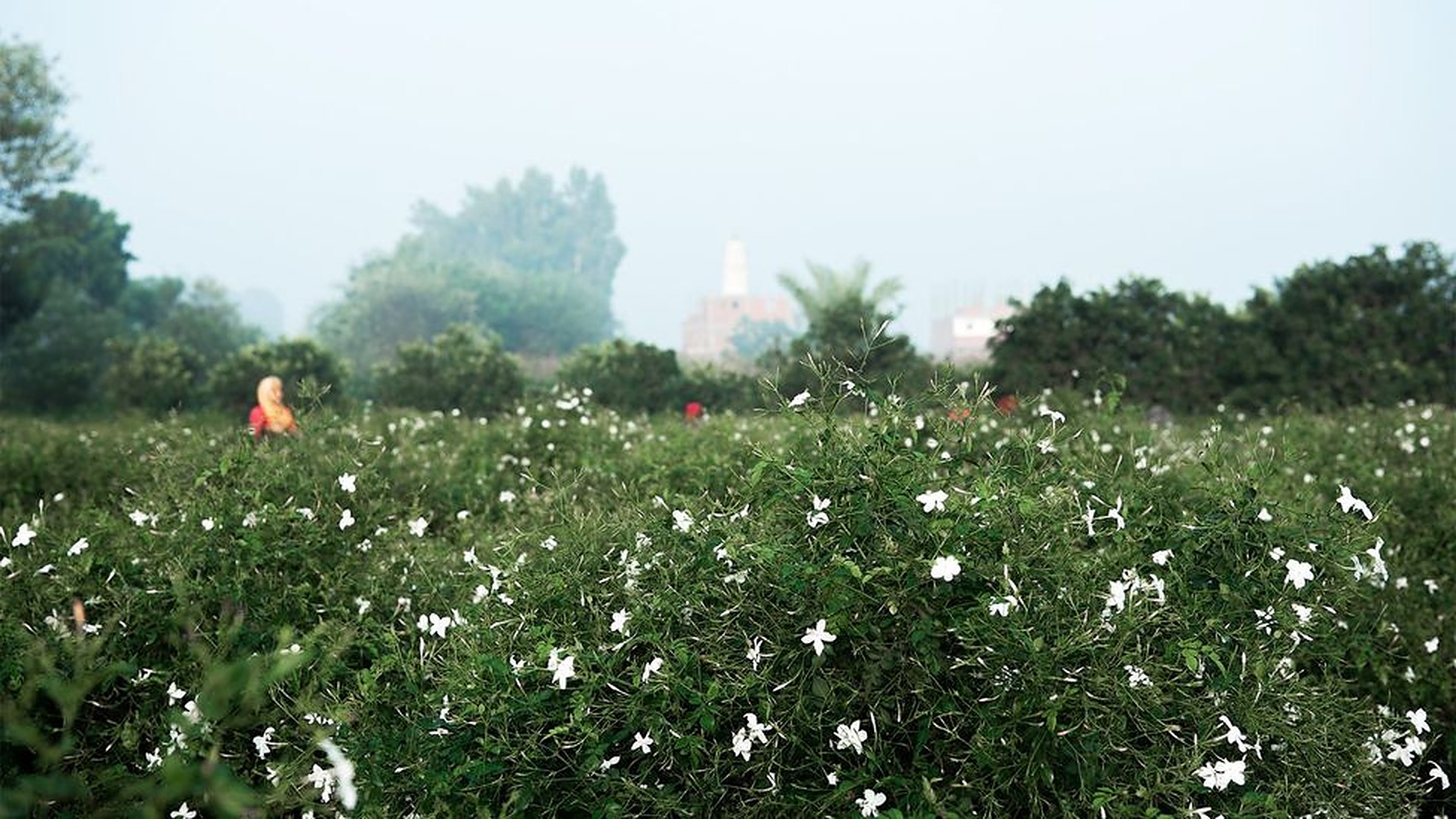Scents can trigger vivid memories, and teleport us to places, past moments and environments even when we’re miles away.
Walking along Egypt’s streets, one can be hit with many scents, both ancient and new, that define the soul of a community or a street. Across history, Egyptians were the first to invent the extraction of flower essences, and regarded good smells as a symbol of the sacred. This is evidenced by the tomb of King Tutankhamon, which includes jars that contain lotus flower essence.
Fast forward to this day, Egypt’s scents have included influences from various cultures, as well as its changing geographical landscape.
The Nile’s Lotus Flower
Egypt, surrounded by lakes and rivers, has often been symbolized by the lotus flower – which was famously known as the national flower of Upper Egypt.
Growing everywhere along the River Nile and becoming the symbol of Upper Egypt, the lotus flower symbolized purity and cleanliness, and was one of the first sources of scent extraction. The bloom was used for the aromatic substances that were necessary for the afterlife to help in the resurrection.
Perfumes with names like “Nile Lily,” launched by Warren Hill in 1885 and “Le Lys du Nil,” launched by Rallet in 1890, used Egyptian themes to remind their buyers of Egypt, as rising interest in the history of ancient Egypt was dominant at the time in the nineteenth century.
Lemongrass
Walking along Egypt’s lush farmland, the scent of lemongrass can help one to remember the freshness of Egypt’s farms. Farms in Fayoum in particular cultivate 500 hectares of medicinal herbs, and the main crops yielded include lemongrass.
Inspired by their green landscape, Egyptians have historically used the refreshing scent of lemongrass for medicinal and spiritual uses to bring forward what we now know as modern aromatherapy.
Jasmine
The soft white petal carries a rich, delicate scent. Egypt’s Gharbiya region is one of the world’s leading sources of jasmine harvest, and the aromatic oils extracted for perfumes from that part of Egypt make up over half the global supply, according to international trade figures.
Nurtured by the waters of the Nile, jasmine trade is expected to pull in around USD 6.5 million annually for Egypt, providing income to around 50,000 people, the International Federation of Essential Oils and Aroma Trades (IFEAT) says.
Today, Jasmine is one of the most prevalent flowers in modern fragrances, boasting a sensual and sweet perfume that is associated with iconic brands such as Diptyque’s Olene Eau de Toilette.
PepperMint
Cooling and fresh, peppermint is an ancient herb with a history of medicinal use among Egyptians. Dried peppermint leaves were often found in tombs inside pyramids. The herb was used for combating headaches and improving digestion, but also for aromatherapy healing practices.
Farms in Minya cultivate over 300 herbs and spices, and peppermint is cultivated and harvested there mechanically with modern farming methods.
Oud
The smell of Oud is full of character – exuding an intense and seductive aroma. Oud, also known as Agarwood, is often identified with the perfumes of the Middle East, and is produced from the wood of trees. It is extracted by cutting pieces of the trunk into small flakes, which are then dipped in water for several days to extract the resin and obtain oils of different quality.
Oud is used in Islamic religious services, such as during Ramadan or the Prophet’s birthday, and can also be used during meditation due to its healing scent qualities.







Comments (0)